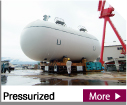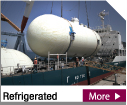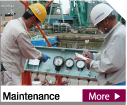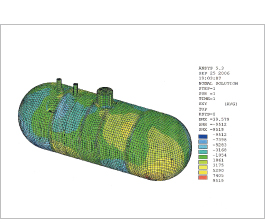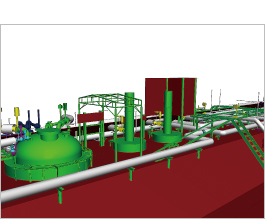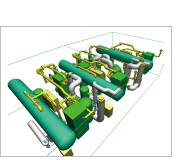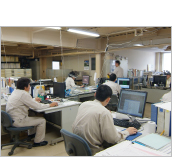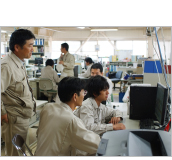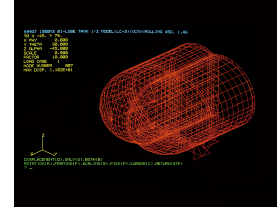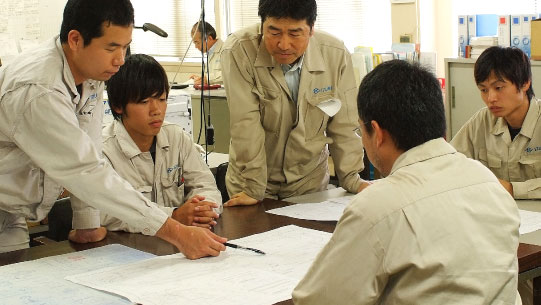

We are working companywide on all quality activities from design, manufacturing to post-handover, aiming to enhance customer satisfaction through the products we provide.
Pursuing Truth Through Testing
Is there any possibility that the cargo liquid inside the tank will be synchronized with the pitching motion of the ship?
When it synchronized, how strong is the sloshing pressure imposed on the tank inside?
What subsequent effect will this have on the ship?
How effective is the swash plate inside the cargo tank?
At IZUMI, we pursue the truth behind these questions through testing based on actual situations faced during marine transport.
Design of piping systems
Expansion and shrinkage occurs for pipes located above tanks due to the pitching and rolling of ships during rough seas as well as changes in ambient temperature, and changes in temperature caused by the cargo. As a result, various forces, such as tension, compression, and bending, are exerted on pipes and supports, as well as equipment connecting pipes such as pumps. Studies are made so that such forces do not have an adverse impact on pipes. For cargo piping for a semi-ref carrier, for example, which undergoes large expansion and shrinkage, we conduct separate piping stress analysis and so on to maximize the pipe’s functions and confirm the soundness of the piping structure.
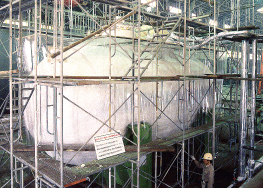
Large-scale model under cooldown test
Minus 196℃
We use liquid nitrogen to cool our model tank to -196℃, return it to room temperature and cool it again. We repeat this many times, collecting various data during this time. In order to develop a pressure build up type of LNG tank plant aimed at the secondary domestic transport of LNG, we conducted cooling and a full loading test for a large model tank in 1991.
Moving at the Cutting Edge
We successfully developed Japan’s first Bi-Lobe Tank with an 18 kg/cm2・G design in 1988. Equipping 699G/T gas carriers with this tank enabled a 20% increase in freight tonnage compared with conventional carriers. Behind this success was diligent development work involving repeated testing using prototypes and computer analyses. Never satisfied with the status quo, at IZUMI we consistently remain at the cutting edge of the industry by considering ways to take action to make a better product. (See article titled “Development of Fully Pressurized Bi-Lobe tank” in issue 716 of the Journal of the Society of Naval Architects of Japan)
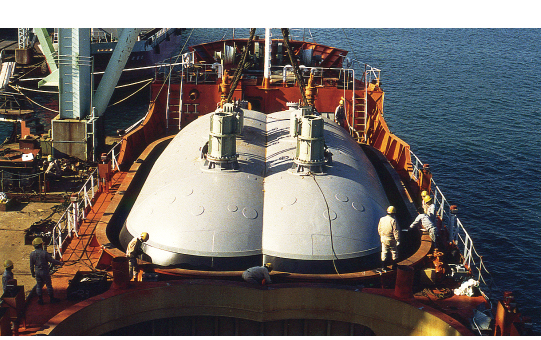
Bi-Lobe Tank
Copyright (C) 2010 IZUMI STEEL WORKS,LTD.
